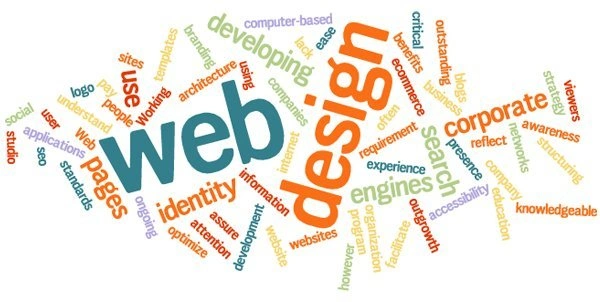The Value of User Experience in Reliable Web Design Strategies
User experience (UX) functions as a keystone in effective web design techniques. It shapes just how users communicate with a site, affecting their contentment and probability of returning. A properly designed UX can boost engagement via user-friendly navigation and receptive designs. Nonetheless, forgeting these aspects may cause irritation and increased bounce prices. Understanding the details of UX is essential for designers intending to develop compelling digital experiences that resonate with varied audiences. What variables truly drive successful user interaction?
Comprehending User Experience and Its Influence On Design
User experience (UX) is often viewed as a simple facet of internet design, it fundamentally forms how users connect with an internet site. UX incorporates all elements of the user's communication, consisting of usability, accessibility, and general fulfillment. A favorable UX promotes interaction, motivating individuals to discover the website and return in the future. Conversely, a negative experience can result in frustration, leading to high bounce rates and shed possibilities for conversion.
Layout aspects like navigating, content, and layout company play essential duties in forming this experience. Effective UX layout expects user needs and choices, ensuring that details is aesthetically appealing and easily obtainable. In addition, comprehending user habits via analytics can offer important understandings, informing design decisions that boost functionality. Ultimately, a complete understanding of UX permits designers to develop sites that not only attract individuals yet likewise advertise significant interactions that straighten with organization objectives and user assumptions.
Key Principles of Effective User Experience
Efficient user experience pivots on a number of essential concepts that improve website functionality and interaction. Intuitive navigating style, responsive design fundamentals, and the significance of aesthetic pecking order are essential aspects that add to a seamless interaction between individuals and web material. Recognizing these concepts permits developers to produce more easy to use and easily accessible electronic environments.
Intuitive Navigating Design
When customers experience a web site, user-friendly navigating layout functions as a critical gateway to their general experience. Effective navigating enables users to effortlessly find the details they look for, boosting their interaction with the website. Trick principles include clear labeling, sensible company, and regular placement of navigating elements. Labels ought to be uncomplicated, enabling individuals to forecast the content they will locate. A well-structured power structure aids users comprehend the connection between different areas, assisting them through the internet site perfectly. In addition, responsive food selections and conveniently obtainable web links add to a fluid experience throughout devices. By prioritizing user-friendly navigating, developers can significantly decrease user frustration and boost interaction, ultimately promoting a favorable understanding of the internet site and its content.
Receptive Layout Basics
A well-structured navigating system naturally results in the requirement for a receptive format, which is important in today's diverse electronic landscape. A responsive design guarantees that websites function seamlessly across numerous gadgets, consisting of smartphones, tablet computers, and desktops. This adaptability boosts user experience by enabling content to be visually systematic and easily accessible, no matter of display dimension. Secret principles of receptive layout include fluid grids, adaptable pictures, and media queries, which assist in ideal viewing. Additionally, prioritizing touch-friendly components enhances interaction on mobile tools. By carrying out a responsive design, developers can accommodate individuals' requirements, decrease bounce prices, and boost involvement. Ultimately, a well-executed receptive layout fosters a positive user experience, motivating visitors to explore the site even more.
Visual Power Structure Importance
Visual hierarchy plays a necessary function in directing customers via a web site, guaranteeing that essential info records their attention. By purposefully making use of dimension, spacing, comparison, and shade, designers can develop a clear path for individuals to comply with. Larger aspects often draw the eye, indicating their significance, while contrasting shades can highlight contact us to activity. Additionally, consistent positioning and collection of related content boost understanding, making navigation intuitive. Efficient use of visual power structure not just improves use yet additionally supports the overall aesthetic of the website, cultivating a positive user experience. When customers can quickly identify the most essential information, they are more probable to involve with the material, bring about raised fulfillment and interaction with the website.
The Function of Usability in Web Design
Usability plays an important function in web design, specifically with navigation simpleness and adherence to ease of access requirements. Reliable navigation boosts user fulfillment by allowing visitors to find details rapidly and with ease. At the same time, meeting access standards assures that all individuals, despite their abilities, can efficiently engage with the web site.
Navigation Simpleness
Simpleness in navigating stands as a cornerstone of reliable web design, substantially affecting user experience. A streamlined navigation system allows users to locate info quickly and without effort, minimizing stress and improving fulfillment. Clear labeling and rational structure are important components, guiding customers effortlessly through the web site. Redundant links or overly intricate menus can disorient individuals, bring about raised bounce prices. Furthermore, mobile responsiveness needs to be considered, ensuring navigating continues to be uncomplicated across gadgets. Minimizing and prioritizing important web pages mess additionally sustains user engagement. Reliable navigating not only cultivates a positive experience but also encourages individuals to explore the website better, eventually resulting in higher conversion prices. In this respect, navigating simpleness works as a vital variable in the overall efficiency of web design approaches.
Availability Requirements
User interaction is substantially enhanced when web sites follow access criteria, making certain that all users, no matter their capacities, can browse and engage successfully. Conformity with these standards not only expands the target market but likewise enhances general user complete satisfaction. Available style integrates attributes such as text alternatives for pictures, key-board navigating, and sufficient shade contrast, which promote use by individuals with impairments. Additionally, applying these requirements can favorably influence seo (SEO) by enhancing site structure and quality. As web design advances, prioritizing accessibility becomes essential in fostering an inclusive digital environment. By accepting these standards, designers add to a much more equitable internet, ultimately driving user loyalty and engagement.
Value of Responsive Design for User Involvement
As consumers significantly access websites through a variety of tools, the significance of responsive style comes to be vital for involving customers efficiently. Receptive design assurances that a website adapts flawlessly to various screen sizes, offering an excellent watching experience no matter of the gadget utilized. This versatility enhances user engagement by promoting easier navigating and interaction with content.
When users come across a web site that is responsive, they are most likely to remain much longer, check out further, and return in the future. A properly designed responsive design lessens the stress frequently associated with zooming and scrolling on smaller sized displays, therefore decreasing bounce prices. In addition, receptive design can positively impact internet search engine positions, as search engines prioritize mobile-friendly internet sites. In today's digital landscape, where mobile use continues to increase, implementing responsive style is not just advantageous, yet necessary for preserving user engagement and assuring a positive experience throughout all devices.
Enhancing Load Times for Better User Complete Satisfaction

To improve tons times, web developers should prioritize maximizing photos, leveraging internet browser caching, and minimizing HTTP demands. In addition, utilizing Web content Shipment Networks (CDNs) can speed up material shipment by distributing it across different geographic locations. Enhancing code, such as compressing CSS and JavaScript documents, additionally adds to quicker packing rates.
Eventually, a commitment to boosting load times not just boosts user contentment but additionally strengthens brand name loyalty and enhances the likelihood of repeat sees. A swift, seamless experience is essential for maintaining users and cultivating favorable interactions.
The Influence of Visual Power Structure on User Communication
Aesthetic pecking order offers as an essential element in guiding user communication on an internet site. By arranging content in such a way that focuses on info visually, developers can affect just how users involve and browse with a website. This hierarchy is developed via numerous layout methods, including dimension, spacing, contrast, and color. Larger typefaces or strong colors attract interest to vital aspects, such as calls to activity or headings, while subdued colors and smaller sized font styles can indicate subservient info.
Effective aesthetic hierarchy assists users swiftly determine what is most important, decreasing cognitive tons and improving usability. It enables intuitive navigating, making why not try these out it less complicated for individuals to locate what they require without stress. As users engage with a site, a well-structured visual hierarchy fosters an extra gratifying experience, eventually leading to higher involvement and conversion prices. Designers must prioritize these concepts to create an user-centered and efficient web environment.
Gauging User Experience: Tools and Techniques

Often Asked Inquiries
How Can I Boost My Internet site's User Experience on a Budget plan?
To enhance a website's user experience on a budget, one can optimize web page lots rate, streamline navigating, execute responsive design, enhance content clarity, and collect user feedback for continuous improvements, making sure an enjoyable site visitor experience.
What Prevail User Experience Errors to Stay Clear Of in Web Design?
Usual user experience blunders in web design consist of chaotic designs, bad navigation, sluggish packing times, absence of mobile responsiveness, overlooking access, inconsistent branding, and stopping working to prioritize user comments - agency for web design. Each can considerably impede overall website performance
How Typically Should I Update My Site for Better User Experience?
Web sites should be updated regularly, ideally every couple of months, to preserve optimal user experience. Frequent updates assist address functionality problems, freshen content, and adapt to changing user requirements, making sure the site stays appealing and pertinent.

Can User Experience Influence Search Engine Optimization Rankings on My Site?
User experience can significantly affect search engine optimization positions, as search engines prioritize internet sites that supply smooth navigating, fast packing times, and interesting content. A positive user experience can result in lower bounce rates and greater search exposure.
What Duty Does Accessibility Play in User Experience Design?
Availability plays a vital function in user experience design by guaranteeing that all individuals, despite capabilities, can browse and connect with a website successfully. This inclusivity enhances general satisfaction and interaction among diverse customers.
User experience (UX) is often regarded as a mere aspect of web style, it basically forms exactly how users engage with a website. User interaction is substantially enhanced when internet sites adhere to ease of access requirements, making sure that all users, no matter of their capabilities, can navigate and communicate successfully. Gauging user experience (UX) is essential for comprehending how successfully a web site satisfies the requirements of its customers. Furthermore, use about his screening, where real users navigate the site while viewers keep in mind difficulties, uses straight feedback on user experience. Common user experience blunders in internet style consist of cluttered layouts, inadequate navigating, sluggish loading times, absence of mobile responsiveness, disregarding access, irregular branding, and failing to focus on user feedback.